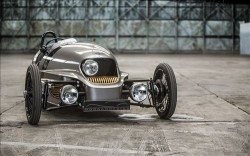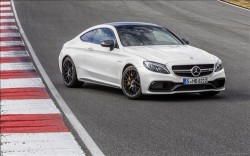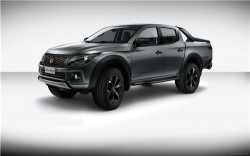Wallpapers
- A Class
- C Class
- CL Class
- CLK Class
- CLK DTM
- CLS Class
- Calendar 2004
- E Class
- F400 Carving
- G Class
- M Class
- Miscellaneous
- S Class
- SL Class
- SL 550
- SL 300 Gullwing
- SL65 Black Series
- SLK Class
- SLK (2009)
- SLK350
- SLR Class
- SLR Roadster
- SLR 722 Edition
- Vision SLR
- Vision GLK Freeside (2009)
 "Oh Lord, won't you buy me a Mercedes-Benz?" That's the opening line of
"Mercedes-Benz," a song most famously recorded by singer Janis Joplin
in the early 1970s. The tune gently poked fun at materialism and our
desire for the finer things in life. It's fitting that the renowned
German marque figures prominently in the lyric. Mercedes-Benz has long
been known for crafting vehicles that emphasize luxury and refinement.
For many, its vehicles are sleek symbols of status, success and
achievement.
"Oh Lord, won't you buy me a Mercedes-Benz?" That's the opening line of
"Mercedes-Benz," a song most famously recorded by singer Janis Joplin
in the early 1970s. The tune gently poked fun at materialism and our
desire for the finer things in life. It's fitting that the renowned
German marque figures prominently in the lyric. Mercedes-Benz has long
been known for crafting vehicles that emphasize luxury and refinement.
For many, its vehicles are sleek symbols of status, success and
achievement.
In January of 1886, Karl Benz unveiled the world's first automobile, a
three-wheeled vehicle dubbed the Benz Patent Motor Car. A few months
later, Gottlieb Daimler and his chief engineer Wilhelm Maybach rolled
out a four-wheeled vehicle powered by his Daimler engine. The first
Mercedes was crafted in 1901, shortly after Daimler's death. Built by
Maybach, the car was commissioned by Emil Jellinek, one of Daimler's
primary distributors, and was ultimately named after Jellinek's
daughter, Mercedes.
In 1926, the companies founded by Daimler and Benz merged to form
Daimler-Benz AG, and the Mercedes-Benz brand was born. The company's
insignia was a three-pointed star wreathed in a laurel; the star was
dreamed up by Daimler years earlier, and its three points signified the
fact that his engines were for use in vehicles that traveled land, air
and sea.
Right from the start, the Mercedes-Benz name was synonymous with
automotive excellence. One of the automaker's earliest vehicles, the
1931 Mercedes-Benz 170, distinguished itself as the world's first
production car to offer a technology that was nothing short of
extraordinary for the day: four-wheel independent suspension. The '30s
and '40s saw Mercedes establishing itself as the brand of choice for
car buyers seeking the ultimate in luxury, thanks to coveted cruisers
like the 380 and 540K.
The 1950s witnessed the introduction of the Mercedes-Benz 300 SL
"Gullwing," a sports car that has been described as being the world's
first supercar. With its dramatic styling and race-bred technology, the
300 SL reigns today as a classic coveted by collectors worldwide. The
decade also saw Daimler-Benz making strides in the area of safety
technology. The company's Mercedes-Benz 220 sedans were the first
vehicles to incorporate its patented "crumple zone" body design,
created to absorb impact in the event of a crash.
In 1963, the company cemented its reputation as the home of automotive
luxury with the launch of the Mercedes-Benz 600. The elegant, luxurious
sedan was also available as a limousine and featured an
ahead-of-its-time air suspension system and a V8 engine that boasted
300 horsepower. The decade also saw the launch of the Mercedes-Benz 300
SEL 6.3. This full-size sedan went from zero to 60 in under seven
seconds, distinguishing itself as the quickest luxury car is its day.
The 1970s saw the birth of the brand's storied S-Class line of
vehicles, opulent sedans and coupes that coddled passengers with
powerful engines and a long list of luxury features. The decade also
saw Mercedes continuing on the cutting edge of safety technology, by
being the first to offer antilock brakes in its vehicles.
Daimler-Benz's safety advancements continued in the 1980s. Its cars
were the first to offer airbags and traction control. The manufacturer
also raised the bar in terms of ride comfort and handling when it
introduced multilink rear suspension. The technology debuted on the
compact Mercedes-Benz 190 E, and it remains a vital component of the
company's chassis engineering to this day.
Mercedes-Benz vehicles got an extra dose of power and performance in
the 1990s, thanks to the manufacturer's partnership with AMG, a
performance and tuning shop that was eventually purchased by the
company to help produce high-performance versions of some of its
vehicles. The first AMG model offered in the U.S. was the sporty C36
AMG in 1995; since then, Mercedes has gone on to offer an AMG-tuned
version of almost all of its vehicles.
The company's current lineup is the most comprehensive in its history.
With a variety of sedans, coupes, SUVs and roadsters filling Mercedes
showrooms, it seems like the only thing missing is a pickup truck.
Surely, the fact that Janis Joplin's song holds as much relevance today
as it did more than three decades ago is a strong indicator that the
brand's premier status is still very much intact.
Views: 39165
[Source: Edmund's ]
Latest Wallpapers
Following is the list of recent pictures updates on our site.
DieselStation Social
Cars You May Like





















